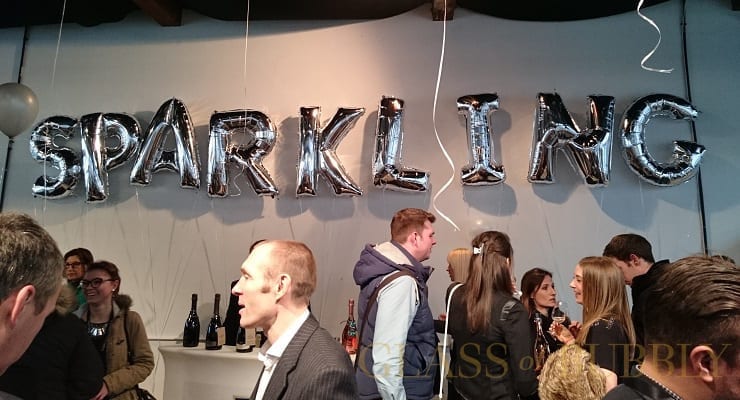School of Sparkling Wine
29th March 2017

Education is the key when drinking Sparkling wine. Do you know your Cava from your Prosecco? Your Asti from your Lambrusco? Your Champagne from your Vouvray?
From the appearance in a glass alone it’s hard to know what you might be drinking. If you lined up three different styles of sparkling wine, they would all look very different: lots of bubbles, not many bubbles, small bubbles, large bubbles, the colour, the aroma, the list goes on. Don’t always rely on the label too, just because its say’s Prosecco or even Champagne the wine might not even be that good to drink! If you have ever had a bad experience with a certain sparkling wine don’t let it put you off from trying it again, but this time try it from a different producer. The wine making method will be the same but I’m certain it will taste a lot different from the first time.
While working in the wine industry, I always hear consumers say to me that they hate Champagne because “It burns when they drink it” or they won’t drink Prosecco because “It’s cheap & nasty.” Maybe 20 years ago they were right but sparkling wine has come a long way since then. Prosecco in the UK today is at an all-time high and we still buy more Champagne from France than any other county in the world. I’ve put some wine lessons together for you to read and learn more about your favourite bottle of fizz.
Lesson 1 – Italian Sparkling Wine
Prosecco – When choosing Prosecco there are certain things to look out for on the bottle. PROSECCO DOC on a bottle means it’s an Italian quality assurance that the grape has come from the regions of the Veneto and Friuli. This means that this wine has passed certain standards and the grape to be given a DOC standard. PROSECCO DOCG is the next step up and must meet all DOC requirements plus be bottled in the region of production. Each bottle will carry a numbered seal of approval.
Lambrusco – In the 1970’s, lax regulations allowed a frothy, sweet version to carry the name ‘Lambrusco’ and in so doing inflicted lasting damage on the reputation on one of Italy’s most imaginative wines. Now in 2015, Lambrusco is the wine to drink this summer. Lightly chilled with refreshing acidity of summer strawberries and red cherry this dry Italian sparkling red wine goes very well with Prosciutto and Parmesan.
Lesson 2 – French Sparkling Wine
Champagne – Did you know that there are three main grape varieties used when making Champagne not just two? They are Chardonnay, Pinot Noir and Pinot Meunier. Rosé Champagne is the only style of rosé in the EU that can be made by blending red wine and white wine. Here are some labelling terms used to indicate the level of sweetness in a sparkling wine:
Sweetness Level:
Brut Nature – very dry
Extra Brut – dry
Brut – dry to off-dry
Extra-Sec – off-dry to medium-dry
Sec – medium-dry
Demi-Sec – sweet
Doux – luscious
When choosing that perfect bottle of Champagne, look out on the label for ‘Blancs de Blancs’ these wines are always made with 100% Chardonnay and have a crisp green apple taste, but if left to age can then develop a rich buttery character. ‘Blanc de Noirs’ these wines can only be made with Pinot Noir and Meunier with will give your Champagne a red fruit character. If you want the top best Champagnes, then look for the words ‘Prestige Cuvee’ these wines are super premium and can be non-vintage or vintage.
Lesson 3 – Spanish Sparkling Wine
Cava – We all remember Cava as a cheap and nasty sparkling wine that was brought to a party and never drunk. A wine that was got out every Christmas and then put back in the wine rack. A wine that people were embarrassed to buy!
Now in 2015, I really think Prosecco has something to worry about. Cava is now bigger and better than ever and with Cava bars popping up all over Barcelona it’s only a matter of time before they reach our shores. Most Cava is dry, with medium acidity and a smoky character, but more and more producers are using Chardonnay and Pinot Noir varieties, which can give an extra level of both fruit and acidity.
What I love about the wine industry is everyone wants to learn more and more and then pass their knowledge on to the next generation.
Did you know in Germany they drink more sparkling wine than beer?
Written by Paul Laurie
![]()
Glass of Bubbly
Executive editor of news content for the website Please enjoy the articles that we share - We hope you find our love for Champagne & Sparkling Wines both interesting and educational.
